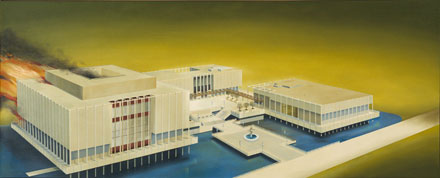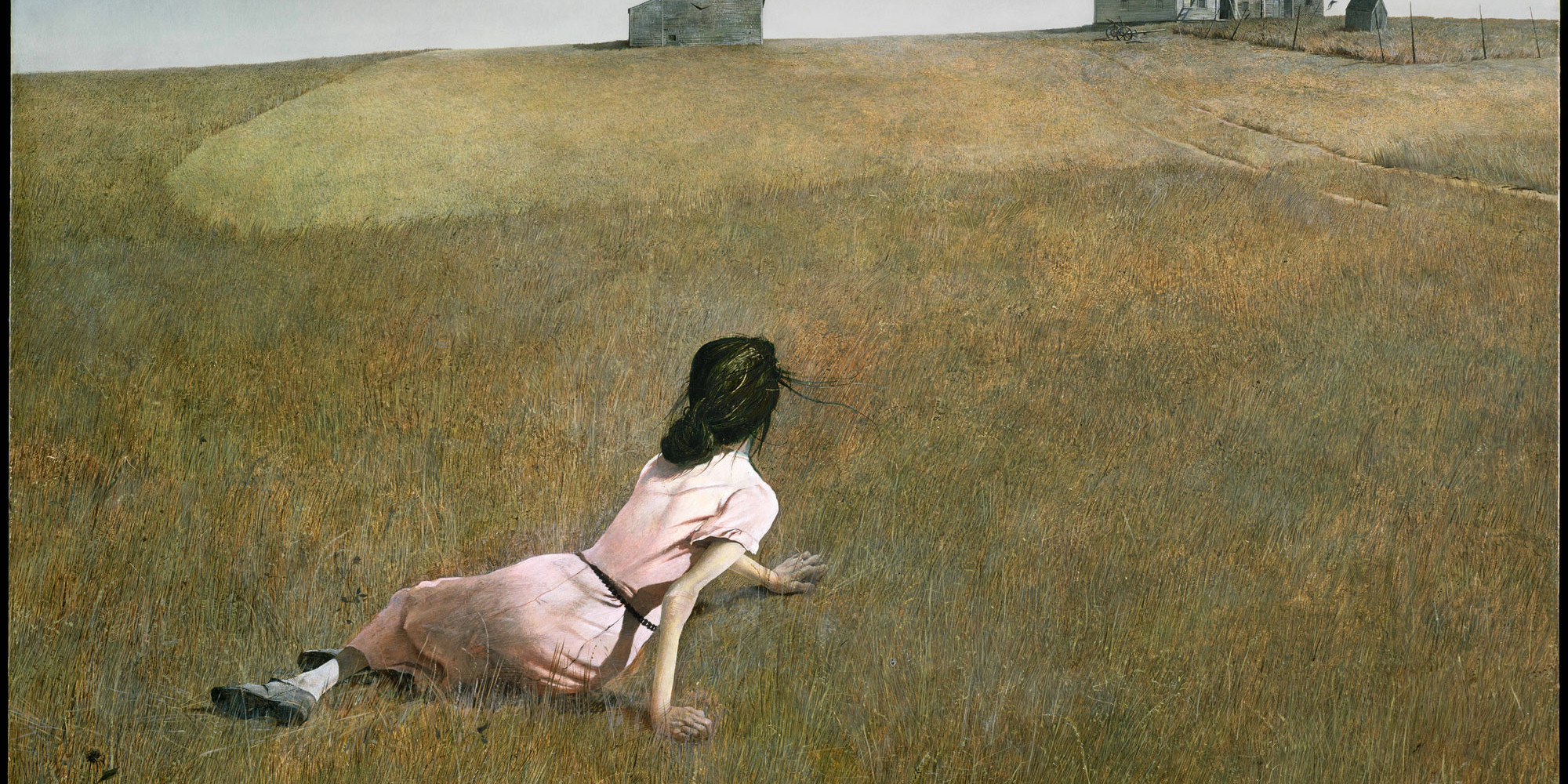Unveiling the Uncanny: Willard's "Landscape Parables" and Its Artistic Parallels
by Carlo Borloni
Willard's latest collection, "Landscape Parables", represents a compelling exploration of the intersections between the ordinary and the surreal. By reframing familiar elements of rural and suburban life, Willard not only creates visually striking compositions but also prompts viewers to reconsider the significance of the mundane.
This thematic focus places him within a broader artistic tradition that includes figures like Ed Ruscha, Bernd and Hilla Becher, René Magritte, Andrew Wyeth, and Charles Sheeler, all of whom have similarly sought to reveal the deeper meaning inherent in everyday objects and scenes.
Willard's journey into the realm of generative coding and digital rendering marks a significant evolution in his artistic practice. Initially drawn to generative art through platforms like ArtBlocks and Fxhash, Willard embraced the potential of coding as a medium for narrative worldbuilding.
This approach aligns him with contemporary generative artists who use algorithms to create complex, often unpredictable works. However, unlike many who come from a technological background, Willard's foundation in design, architecture, and traditional artmaking informs his unique perspective.

Plane Spotting, Willard
One of the most striking aspects of "Landscape Parables" is its use of overt staging and composition.
Willard meticulously arranges elements such as water towers, barns, and bulldozers in ways that both highlight their individual forms and challenge their conventional associations. This technique is reminiscent of the work of Ed Ruscha, whose iconic depictions of American vernacular architecture similarly play with the viewer's perception of the familiar.
Ruscha's use of stark, almost clinical representation transforms gas stations, parking lots, and commercial signage into subjects of aesthetic contemplation. An image of one of Ruscha's most famous works, such as one from his series of gas stations or commercial signs, shows the parallelism in the use of vernacular architecture.

Los Angeles County Museum of Art on Fire, Edward Ruscha
Similarly, Willard's compositions invite viewers to see the beauty and complexity in everyday structures, thereby imbuing them with a poetic resonance.
The influence of Bernd and Hilla Becher is also evident in Willard's work, particularly in his methodical approach to documenting and recontextualizing architectural forms.
The Bechers' typologies of industrial buildings, water towers, blast furnaces, and grain elevators emphasize the formal qualities of these structures while stripping them of their functional context.
New York Water Towers, Bernd and Hilla Becher

Industrial Facades, Bernd and Hilla Becher
Willard adopts a similar strategy in "Landscape Parables", isolating elements from their usual environments and placing them in staged, almost theatrical settings. A typology of industrial structures, such as water towers or silos, highlights the Bechers' influence in methodical documentation and architectural recontextualization.
This decontextualization creates a sense of ambiguity and unease, compelling viewers to question the roles these structures play within the narrative of the American landscape.

The Horizon Hides More than it Reveals, Willard
René Magritte's surrealist influence is perhaps most palpable in the uncanny atmosphere that pervades Willard's collection. Magritte's ability to evoke the mysterious within the mundane, through juxtapositions and transformations that defy logical explanation, finds a parallel in Willard's work.
The familiar elements in "Landscape Parables" are rendered strange through their unexpected arrangements and the subtle distortions of perspective and scale. An emblematic work like Magritte's "The Treachery of Images" or "The Lovers" illustrates the surreal quality and the influence of surrealism in Willard's work.
This surreal quality is heightened by Willard's use of digital modeling, which allows for precise manipulation of space and form, creating scenes that oscillate between the real and the imaginary.

Tragedy in the Name of Progress, Willard
The theme of melancholy, a recurring motif in Willard's art, is intricately woven into "Landscape Parables".
His depictions of empty rural landscapes evoke a sense of solitude and introspection, reminiscent of the quiet, contemplative spaces in the paintings of Andrew Wyeth.

Imminent Domain, Willard
Wyeth's ability to capture the emotional undercurrents of rural America through his detailed, realist style resonates with Willard's own exploration of the tension between romanticism and isolation in rural life.
A painting like Wyeth's "Christina's World" shows the parallel with the melancholic and contemplative representation of rural landscapes. Both artists create works that, while grounded in specific locales, speak to broader themes of memory, loss, and the passage of time.

Christina's World, Andrew Wyeth
Willard's compositional techniques also draw parallels with the precision and clarity found in the works of Charles Sheeler, an artist known for his depictions of industrial and architectural subjects. Sheeler's clean lines and careful attention to the geometry of his compositions find an echo in Willard's staged still-lifes, where each element is meticulously placed to enhance the overall narrative.
An image of one of Sheeler's industrial or architectural works, such as "American Landscape", highlights the attention to geometric precision and composition. This architectural sensibility, combined with a painter's eye for detail, gives Willard's work a distinctive visual and conceptual rigor.

American landscape, Charles Sheeler
In "Landscape Parables", Willard continues to expand the boundaries of his artistic practice, integrating new techniques and themes while maintaining a cohesive narrative vision. His work challenges viewers to engage with the ordinary in new ways, revealing the layers of meaning and emotion that lie beneath the surface.
By drawing on a rich tapestry of influences, from generative art and surrealism to American realism and architectural photography, Willard situates his collection within a broader dialogue about the role of art in transforming our perception of the world.

The House Unbuilt, Willard
As Willard looks to the future, he remains committed to pushing the limits of his craft, exploring new media and conceptual territories. His willingness to experiment and evolve, while staying true to his core themes, ensures that his work will continue to captivate and inspire. "Landscape Parables" is not just a collection of artworks; it is an invitation to see the world through Willard's eyes, to find the extraordinary in the everyday, and to embrace the uncanny beauty of the ordinary.
Sign up for our newsletter to keep up with the latest news from NINFA
Sign up for our newsletter to keep up with the latest news from NINFA
Write us at: info@ninfa.io, or click here if you need support
Copyright © 2026 Ninfa Labs - 12094240962 - All rights reserved

